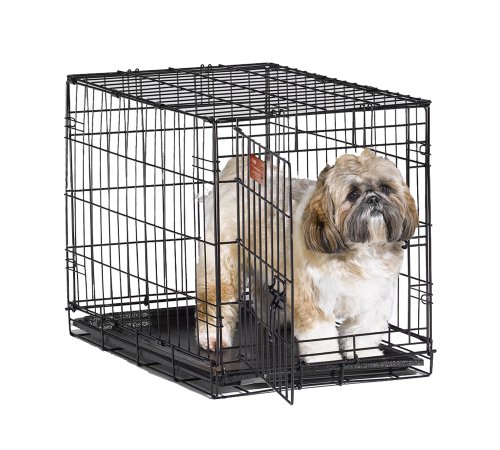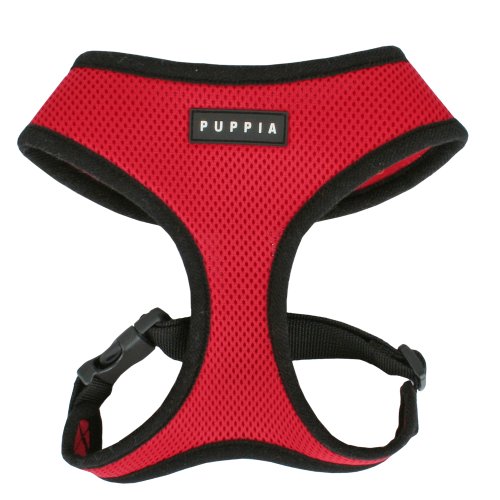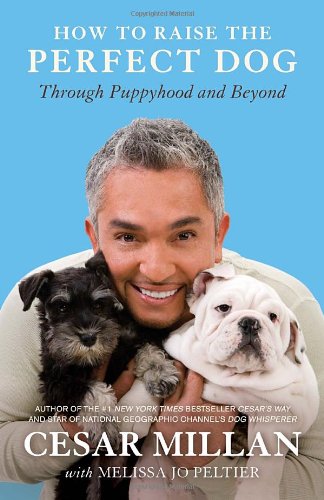
 Credit: Barna Tanko Dreamstime.com
Credit: Barna Tanko Dreamstime.com
Raw diets have become a popular choice for dogs in recent years. There are many reasons for this, but among the most common is the distrust and dissatisfaction owners have of poor quality manufactured dog food. There is also a plethora of material now available on the internet that promotes raw food as a more natural diet for our best friends, although those same sites don’t always explain why owners should undertake extensive research to decide whether switching is really the best thing for their dogs … and themselves.
While some internet sites are undoubtedly little more than raw dog food suppliers promotional pages, others are genuinely attempting to raise awareness about the subject and offer useful facts so owners can make an informed choice. The so-called “raw debate” has gathered momentum in canine circles and has now created such demand that new suppliers are entering the market every day. The problems are multi-layered for owners trying to make the right choice. Considerations involve the dog’s health, personal convenience, product cost, quality and storage, and perhaps more importantly … whether our pets are genetically and anatomically today the same as their wild and ferocious ancestral wolves of the past.
Manufactured Dog Food Quality
Dog food has come a long way since the days when we fed our best friends from table leftovers. Manufacturers have amended their products to the benefit of dogs’ health, simply because owners are more informed these days and are demanding a higher quality of food for their pets. There is no doubt that many products supplied in this market are not only safe but are also of a high nutritional value. However, the market is also flooded with huge diversity in cost and quality – and some products fall far from the minimum standards that many owners are willing to accept.
There are increasingly reported cases of salmonella, listeria, foreign object, metal, medicinal and other contamination that the FDA consider serious enough to issue a product recall. The cheaper varieties of dog food are often of poor nutritional value, containing by-product waste from other manufacturing processes such as human food production. This waste matter would ordinarily be destroyed, but manufacturers have long since discovered it has a profitable function when transformed into dog food.
Some owners have also demanded a longer shelf-life for improved convenience, which is why dry dog food products are now flooding the market. These are, in my opinion, purely designed for human convenience – and not for the good health and better nutritional value that high-quality dog food should offer. Dry dog food is generally less nutritional and has more preservatives, colourants and chemicals than many alternatives – and has the potential to cause chronic dehydration over the years that dogs eat it, which in turn can lead to fatal health conditions such as chronic kidney failure.
The dissatisfaction about manufactured dog food product quality (combined with a greater understanding of what our best friends need in terms of nutrition) has led to the belief many now have that the best canine food is raw meat. The basis of this belief is the genetic link domesticated dogs have with their wild ancestor, the wolf. It’s a reasonable assumption, but the debate about whether it’s right or wrong is not so straightforward.
The Inner Wolf Theory
The ingredients of most manufactured dog food products work on the theory that pet dogs are omnivores (like humans) … creatures that eat a variety of food sources including meats and plants. This is one reason manufacturers include vegetables, grains and pulses in their products. The other reason is that these materials are cheap, often of low-quality (commonly being by-products of other processes) and they bulk out a product to make it seem like a buyer is getting more for their money.
But if a dog is actually a carnivore, like the wolf, then adding plant source material is inappropriate as a regular and major part of the diet and is likely to cause more harm than benefit over time. This simple premise is the base of the argument for all those that advocate a raw food diet for dogs.
However, it is possibly flawed because the anatomical make-up of the domesticated dog of today is a far cry from their ancestral counterpart. We need only to place a Chihuahua next to a Great Dane to see at least one startling difference. Human intervention and targeted breeding for over 15,000 years have caused the basic characteristics of the wolf to explode into 340 very different animals, according to the Fédération Cynologique Internationale (FCI), which is the world's governing body of dog breeds. This process has undoubtedly transformed the wolf into a huge diversity of sizes, shapes, coat types and colours, temperaments and characteristics. The real question is, have the nutritional needs of dogs also changed and have they adapted during this process or do they still intrinsically require the same nutritional components of raw food today as they did in the past to sustain long, healthy and active lives?
The difficulty answering that question lies in the fact that we really don’t know enough about how much the internal organs, cardiovascular, digestive and metabolic systems of each breed of dog have altered over the last 15,000 years. Some experts in this field suggest that while the shape, size and other characteristics have obviously changed through selective breeding, their internal systems and nutritional needs remain unaffected.
For example, a dog’s stomach has ten times the amount of hydrochloric acid as humans, which means they break down and digest far more animal meat, bone and organs than we can and they do it in a more efficient way. While omnivores (such as humans) have flat molars to grind food, carnivores (such as dogs) have sharp teeth designed to rip meat from carcasses and bones. Unlike humans, dogs also have carnassial teeth constructed to slice through meat and sinew. They have a short digestive tract, which means meat can pass through it quickly without them suffering any serious ill-effects from bad bacteria contaminating the carcass. A dog’s digestive system deals effectively with high levels of fat, which means they rarely suffer from or have symptoms of high cholesterol.
In addition, omnivores and herbivores need amylase in their saliva to help break down and extract the nutrients (such as sugars) from plants, fruit and vegetables. In contrast, dogs do not have any amylase in their saliva, because their natural diet simply doesn’t need it. The pancreas of herbivores secretes an enzyme called cellulase to help extract the energy from plant matter. A dog’s pancreas doesn’t secrete any cellulase at all, which is why some pet food manufacturers add enzymes to their products to help dogs digest the inappropriate ingredients they put in them. In short, a dog’s digestive system has evolved to metabolize meat, just like it always has been – and even 15,000 years of selective breeding and domestication seems to have had little impact on the system’s carnivorous nutritional need.
Some owners, veterinarians and dog food manufacturers surmise that specific dog breeds have specific nutritional needs. If this is true, then the obvious conclusion is that a raw diet alone will not meet the need of a particular breed of dog. Suppliers have tended to jump on the profit-potential bandwagon by introducing specific products for each breed, even though the vast consensus of veterinarians and canine nutritionists believe here is no need for such products to exist. A healthy dog will get all of its nutritional requirements from most high-quality dog foods, regardless of breed. The belief that Dachshunds need extra calcium for their elongated spines and Golden Retrievers need extra support for breed prevalent cardiac conditions is utter nonsense.
In its natural habitat and eating a natural diet, a wolf will survive for 6 – 7 years. In contrast, a wolf raised in captivity (being given extra diet supplements and a varied raw diet) will often live for 14 years. Moreover, different pack members will often get access to different parts of the kill. Pack hierarchy means the alpha wolf invariably gets the most appealing part of a carcass, which are the organ meats. Lower-order pack members end up having to rely on muscle and other less wholesome tissues for their nutrition. In this respect, the life of a wild wolf is not always a healthy one – and the food ingredients are not always balanced or nutritional. Wolves will also often eat about 5% of their diet in grass, berries and fruit to help with digestion, even though these elements do not usually offer any direct nutritional advantages but instead solve a particular digestive need or deficiency or they may simply just have a nice taste. So while a raw-fed meat-only diet may seem the right one for our dogs based on genetics and anatomical processes, that alone does not mean it is necessarily the healthiest of diets or one that promotes a longer life.
But Can Dogs Get All Their Nutritional Needs From Raw Meat Alone?
Prior to manufactured dog foods being produced, our pets lived on the scraps we gave them from our own dining tables. Manufactured dog food was initially introduced as a convenience for owners and it has since become the norm throughout most parts of the civilised world to “buy-in” food for our dogs. Recent statistics suggest the pet food industry’s sales are worth a staggering $30 billion a year, so it is no surprise that manufacturers are constantly finding new ways to expand their profits by introducing new products to an unsuspecting dog owner population. If they can find a way to hook you and reel you in, they will.
Dogs are scavengers and will eat almost anything if they are hungry (or in some cases, just greedy). And just because they eat it, it doesn’t mean it is good for them. If they only ate what was good for them, they wouldn’t consume sugary children’s sweets, canine-toxic chocolate or (we all know it’s a fact) their own or another dog’s faeces and vomit.
So, just because a dog will happily eat a largely vegetarian meal placed in his bowl, it doesn’t mean they get any nutritional value from it. The same goes for any food we choose for them. Owners' responsibility is to offer the best food they can afford and find, regardless of whether it looks appealing to us or not. Manufacturers prey on the sensitivities of owners by advertising their dog food with photographs of succulent vegetables, fresh fruit and seemingly wholesome chunks of cooked chicken or beef in gravy. But these ingredients may have no value whatsoever to a dog, if the dog in question is unable to extract any nutritionally useful elements from them.
In relation to raw diets, manufactured kibble and canned dog foods seem attractive to humans, because many consider their dogs as their children and want to give them something they find appealing (even though they wouldn’t eat it themselves). In contrast, the idea of giving a slab of blood-drenched raw meat is somewhat less appealing to us as humans, but only because we have forgotten to think of our pets as the nature-driven animals they actually are.
There are now several companies selling so-called raw dog food products trying to supply the rising demand – and they claim these products fulfil all the nutritional requirements of dogs. Unfortunately, some of the claims are untrue. Although the products are raw, some include vegetables and fruit (which are completely unnecessary) and many don’t provide the necessary combination of bone, organs, glands and tissues required as a fully balanced raw diet. Even more disconcerting, the source and quality of the animal ingredients are not always explained. This means that some may include material from 4D classified carcasses. This classification refers to animals (including dogs) that were either euthanized due to disease or age and/or were likely treated with dangerous antibiotics and other potentially toxic medicines. Furthermore, products described as including ‘ground meat’ do not offer dogs any dental hygiene benefit or satisfaction from gnawing and searing through bone and flesh.
In short, yes, dogs can get their entire nutritional needs satisfied from a high-quality raw diet, but only when the food includes meat, organs, glands and bone in the proper combination and ratio derived from healthy organically farmed (pasture fed) animals. It is essential that the raw food is quality verified, the meat sourced, checked for bacteria and contamination, and guaranteed free of antibiotics, hormones and other potentially toxic medicines and supplements.
The counter argument is that animals farmed organically using natural remedies for pest control and to boost and enrich pasture growth are not necessarily healthier animals … and therefore, the meat obtained from them is not necessarily healthier either. Some “natural” chemicals used in organic farming are more toxic than the manufactured ones. In addition, some of the chemicals used as pesticides in traditional modern farming has freed many animals from tormenting parasites and has made their lives happier and the meat produced from them safer. Of course, these legitimate counter-arguments are exactly why the subject of raw-feeding remains a controversial and complex dilemma for many.
When to Start Raw Feeding
Unlike cats, who need a cautious introduction to raw feeding to prevent digestive and other health concerns, dogs are not usually so problematic. A healthy dog can begin on a raw feed diet immediately, regardless of age, although it is best to start it at least 12-24 hours after the last meal to give the earlier days processed food meal a chance to vacate the digestive tracts. Most dogs will instinctively tuck-in to their first raw diet meal, knowing this is the food their body needs. Other more cautious or finicky dogs may turn their noses up at it at first, but given a day of fasting, they will usually start eating it without any problem. If after a couple of days, your dog is still refusing to eat the new diet, contact your vet or canine nutritionist to discuss the best management protocol.
Experts in the field suggest staying with the same protein source for the first two weeks. So if it’s chicken, stick with chicken meat; if it’s beef, stick with beef meat; and so on. After two weeks, you can change to an alternative protein source for variety and start adding glands and organs (it’s often better to start with the liver). It's best not to make any diet changes without the dog’s faeces being consistently firm. If there are loose stools, then hold back from feeding organs and glands for the time being. Raw diets take some time to have the desired health benefits. Different minerals, vitamins and benefits from eating different raw meats, muscle tissue, glands, bones and organs are eventually obtained. So, if the diet is missing a specific vitamin or nutritional element from today’s meal, tomorrow’s meal will supply it instead. Over time, the diet delivers all the nutrients required.
And that is exactly how the wolf would have eaten centuries ago.
How Much To Feed
Guides suggest the best approach is to feed between 2% and 3% of an adult dog’s ideal weight in raw diet food per day. It is important to keep a weight diary to record any changes. This will help you decide how much to increase or decrease amounts according to weight-gain or weight-loss. There is often some uncertainty about a puppy’s ideal body weight, and in such cases, it's advised to feed 10% of current body weight.
It is also important to get the variety of raw ingredients in the right ratio, as this helps make sure the complete weekly diet supplies all the necessary nutrients. Guidelines (based on how the wolf eats) are 80% meat, 10% bone, 5% liver and 5% other organs. It is not always necessary to get this ratio correct every day, but aiming to hit this target over the course of a week will meet the same goal.
There is a huge amount of conflicting information available on the Internet and from veterinarians and canine nutritionists about the dangers of feeding bones to dogs. Much of this conflict arises due to the type of convenience treats available in pet stores. This style of treat is often supplied as cooked or baked bones, which can easily splinter causing mouth, gum and dental injuries and – if swallowed – cause even more severe trauma further down the digestive tract. Raw bones are quite different. A dog will gnaw on a raw bone to get every morsel of flesh from it and this gnawing process breaks the bone up into safe small pieces. This procedure also cleans the teeth and helps make sure the bone itself becomes harmless as it travels through the stomach and into the intestines. The size of the dog, the size and type of bone and the amount given in a week are critical safety factors that need consideration.
Occasionally dogs will regurgitate their food and this behaviour can seem like choking. In fact, this is a natural process. Dogs tend to rip at food and gulp at it. This is largely instinctive because in the wild a wolf becomes preoccupied with competition for the meal from the rest of the pack. If the food swallowed is not properly chewed or hasn’t been broken down into small enough pieces, a dog will often bring it back up and eat it again. This may seem pretty disgusting or worrying from our point of view – but for a dog, it’s a very natural thing to do.
It is worth mentioning here that too much bone in the diet can lead to constipation while too little can lead to diarrhoea. Varying the amount given in a week will help prevent adverse consequences arising.
How to Source Raw Diet Ingredients
Sourcing high-quality raw ingredients is absolutely crucial to a successful transition from manufactured dog food to a species appropriate raw food (SARF) diet. It is also the biggest challenge to pet owners, because finding a reliable, trusted and regular supplier is often difficult and occasionally impossible. Much depends on where you live. Rural dwellers tend to have access to a wider abundance of farms and some of these may offer pasture fed organically raised slaughter animals as a regular supply. However, urban dwellers may find it extremely difficult to find or get to a similarly capable high-class supplier.
There are Internet suppliers that will offer to supply high-quality raw food in a variety of ingredients to almost anywhere. The raw meat, organs and bones ordered are usually frozen and transported within 24 hours to keep it as fresh as possible. If the Internet proves unsuccessful, try approaching local vets and good quality pet shops, as they may have access to useful information. Local butchers sometimes also have valuable contacts and extensive supplier lists. Networking and word-of-mouth are also worthwhile information highways, so don’t ignore the power of facilities like social media to help find potential suppliers in your area.
Throughout this process, bear in mind verifying the quality and safety of the animal source food is of the utmost importance. It is crucial to substantiate how and where animals were raised, what they were given to eat, whether any medications or hormones were given, how they died and the reason for slaughter. The outcome of these investigations will prove extremely beneficial to your dog in the long-term.
The Bacteria Hazard
Perhaps the single most off-putting element involved in raw diet feeding is the health risk of contamination to both humans and canines in the household. The Centre for Veterinary Medicine (CVM) screened over 1,000 samples of pet food for bacteria that can cause food borne illnesses. The study concluded that, compared to other types of pet food tested, raw pet food was more likely to have disease-causing bacteria contamination. The FDA (U.S. Food & Drug Administration) is so concerned about this it issued the following warning to pet owners at the end of its 2010 to 2012 study: ‘Because raw pet food is more likely than other types of pet food to contain Salmonella and Listeria monocytogenes, the single best thing you can do to prevent infection is to not feed your pet a raw diet.’ (Ref: ‘Get the Facts! Raw Pet Food Diets can be Dangerous to You and Your Pet’).
Raw diet ingredient quality and the way it's made ready for sale are crucial factors in reducing the bacteria risk, which is why owners need to authenticate the service and develop trust between themselves and their supplier. The best service will be one where the ingredients are professionally and independently tested and are consistently verified free of any dangerous levels of bacteria before sale.
Handling & Storage
The same high level of care and hygiene is necessary for the handling and storage of raw diet dog food as it is for raw meats and poultry intended for human consumption. Frozen raw dog ingredients are best kept in a separate freezer or in a special section of the home freezer. It needs to defrost slowly and completely in a refrigerator and should never be left out on a kitchen surface, where it will warm up (causing any existing bacteria in the meat to rapidly reproduce) and where it could also be attracted by flying and crawling insects. Pet owners need to wash and dry their hands thoroughly before and after handling the raw ingredients and wash down any chopping boards, kitchen knives and utensils, and all surfaces the meat has come into contact with.
A raw food meal needs delivering to a dog as quickly as possible after the ingredients are properly thawed out. Safely discard any scraps a dog may leave straight away and never leave them in the dog bowl or get tempted to keep them for feeding later.
These simple steps will help protect your dog and other family members from the very real and potential risk of cross-infection from bacterial contamination.
Dogs with Existing Conditions
There are those that suggest any and all dogs are best fed a raw diet. I do not agree with that suggestion. Dogs with pre-existing illnesses and conditions, allergies, digestive problems, immune system issues – and dogs that are pregnant or otherwise fragile or infirm – are susceptible to any of the earlier mentioned dangers of a sudden switch to raw feeding. In such cases, it is extremely important to consult your vet before considering such a big change in the diet.
Some dogs are also prone to certain conditions, such as pancreatitis, and a raw diet could cause a severe and adverse flare-up of the illness due to the high levels of fat, protein and other ingredients. Of course, some conditions will benefit from the qualities of a raw diet given over time, but the support and guidance of your vet will help decide if, when and how it is best to make the change.
The Bottom Line
Raw diets are undoubtedly a more natural way of feeding our pet dogs. There are generally some health advantages to it, as long as it is undertaken cautiously and carefully and with a guarantee of the highest quality of source ingredients. But there are also some dangers associated with it too, not least from bacteria that could cause illness in your pet and cross-contaminate to cause illness in you, your children or other family members. And just because a dog is given a more natural species-appropriate diet, it does not necessarily mean that the diet is healthier or that it will help prolong life. Making the change to a raw diet needs some consideration, lots of research, a fair amount of planning and a minimum of one health-check consultation with your vet.
Feeding a raw diet is less convenient than opening a tin or grabbing a handful of dry kibble from a packet, but there are some real health benefits to it and it is also more inherently satisfying for your dog. The ingredients are fresh and won’t contain preservatives and toxins or any of the other chemicals and harmful by-products commonly found in mass-produced manufactured dog food. Over time, most owners report their dogs adapt to raw food extremely well and have fewer visits to the vet for things like digestive upset, allergies and chronic health concerns. While making the change immediately is probably not right for all dogs or for all owners … it’s certainly worth taking a closer look at whether it’s an achievable goal for the future.
 Mistakes to Avoid When Raising a Dog
Owning a pet can be a wonder
Mistakes to Avoid When Raising a Dog
Owning a pet can be a wonder
 The Best Products For Little Dogs
The Best Products For Little Dogs
Small dogs aren抰 access
The Best Products For Little Dogs
The Best Products For Little Dogs
Small dogs aren抰 access
 Be Prepared Before Taking Your Dog on Your Next Holiday Road Trip
Planning Your TripIt is exci
Be Prepared Before Taking Your Dog on Your Next Holiday Road Trip
Planning Your TripIt is exci
 Top 10 Most Intelligent Dog Breeds
IntroductionFollowing on fro
Top 10 Most Intelligent Dog Breeds
IntroductionFollowing on fro
 How To Stop A Dog From Escaping
We love our dogs. After all,
How To Stop A Dog From Escaping
We love our dogs. After all,
Copyright © 2005-2016 Pet Information All Rights Reserved
Contact us: www162date@outlook.com